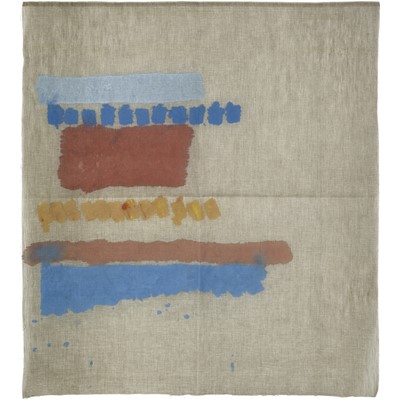Giorgio Griffa was born in Turin in 1936.
In 1958 he graduated in law and started working as a lawyer, which he never abandoned.
He had been studying painting for ten years, until in 1968 he decided to renounce all representational elements.
In those years, he breathed the atmosphere of Arte Povera in Turin.But while the Arte Povera movement abandoned paintbrushes, Griffa strongly believed in painting and re-interpreted it with the most basic strokes (dots, lines, signs, etc.) that had always been present in Man's hand and for this reason could not be renounced.
In 1969, he eliminates the frame that limits the field, and is fascinated by the unfinished.
In each of his works he never fills the canvas and this while on the one hand leaves room for the imagination, on the other hand makes each work the ideal continuation of the previous one.
His abstract works are thus recognisable by the rough, unsized, unstretched canvases he works on the floor, which are then fixed to the wall with a series of nails along the upper edge.
Subsequently, his elementary compositions freely combine, without any hierarchy, painted lines, signs, letters and numbers, which have no other function than to exist in their own right.
"I do not represent anything, I paint", is his adopted credo, reaffirming the concreteness of painting.
The various events in which he exhibited include the São Paulo Biennial in 1977 and his solo room at the Venice Biennale in 1980. He has also had several exhibitions at Castello di Rivoli (1993), GAM in Bologna (1998), GAM in Turin (2002), PAC in Milan (2007), Moderna Museet Stockholm (2008), MACRO in Rome (2010), Casey Kaplan gallery in New York (2012). Since 2007 he has been among the ninety national academicians of the Accademia di San Luca in Rome. American art critic Roberta Smith wrote about him in The New York Times: "His art deserves a place in the world history of abstractionism".
In 2017, he was again invited to the LVII Venice Biennale.


